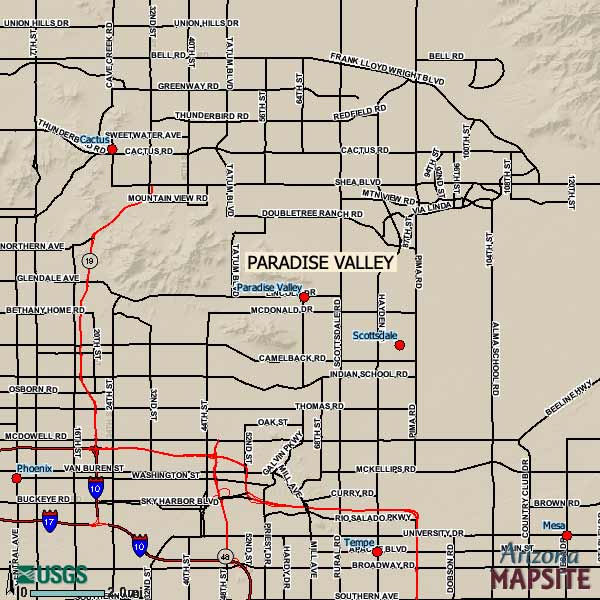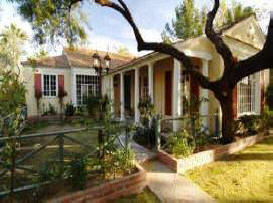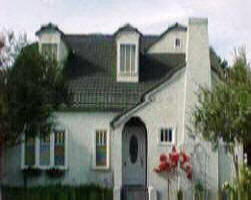|
Paradise Valley Homes For Sale
Paradise Valley Luxury Homes For Sale
Scottsdale Luxury Homes For Sale
Scottsdale Historic Homes For Sale
Paradise Valley, Arizona Map

TOWN OF PARADISE VALLEY HISTORY
During the late 1800’s, cattle grazed in the area surrounded by the McDowell Mountains to the east and Camelback Mountain to the south. In the 1880’s, the Rio Verde Canal Company turned this open grazing area into irrigated farmland. In 1889, the Rio Verde Canal Company sent three surveyors to this area who were so taken by the beauty and tranquility of the desert landscape that they named this area Paradise Valley.
Settlement in Paradise Valley did not begin in earnest until post World War II. Paradise Valley, which is in Maricopa County, was a rural residential area with few commercial entities. Though the homes were modest in size and style, they were on large parcels of land, usually one to five acres.
In the late 1950’s, Phoenix and Scottsdale were looking to expand their respective boundaries. Residents who lived in Paradise Valley area feared that they would lose the rural lifestyle they had become accustomed to and would soon be swallowed up by Phoenix or Scottsdale, and eventually subdivisions, shopping centers, new zoning laws and property taxes would be a commonly. These concerned residents formed a “Citizens Committee for the Incorporation of The Town of Paradise Valley, Arizona,” who set out with petitions urging residents to join them in their attempt to incorporate Paradise Valley. The residents' main goals were to keep zoning to a one house per acre minimum; to keep the area entirely residential; and to keep government regulation to a minimum. In April 1961, the Citizens Committee for Incorporation presented their petition to the Maricopa County Board of Supervisors. On May 24, 1961, incorporation was granted and the Town of Paradise Valley was established.
With a population of approximately 2,000, the first Town Council was formed. During the early years of the Town’s history, the Council spent most of its time establishing the Planning and Zoning Commission, the Board of Adjustment, redefining zoning ordinances, and annexing property. By 1968, the boundaries of the Town of Paradise Valley were pretty well set, with only a few scattered county islands and a handful of neighborhoods adjacent to the Town boundaries that would eventually be annexed. In 2000, with a population over 13,000, only two county islands remain – the community of Clearwater Hills west of Tatum Boulevard and the Franciscan Renewal Center on Lincoln Drive.
Throughout the Town’s 40-year history, the residents have strived to preserve the Town’s original mission – to maintain a residential community in a quiet and country-like setting with little government intervention.
MUNICIPAL BUILDINGS
The first Town Council met in a guesthouse on Quail Run Road. Three years later the Town rented a building on Malcomb Drive, just south of the present Town Hall. By 1974, the Council decided it was time to build a Town Hall using funds accumulated over the years to pay for construction, furnishings and landscaping, and thus Town government moved into a new building designed by architect William Bruder. An addition was built in 1980 to accommodate the growing police force. In 1993, the Council voted to sell bonds in order to build a new public works building, a new public safety building and refurbish the old Town Hall to accommodate the Municipal Court, postal substation and other departments. By 1996, construction of the new Town Hall Complex was complete.
The Arizona Canal Diversion Channel Project
The Arizona Canal Diversion Channel (ACDC) was initiated in 1965 by the Maricopa County Flood Control District and the US Corps of Engineers to alleviate flooding in low-lying areas throughout the Phoenix Area. The Reach IV portion of the ACDC was proposed in the mid-1970's as a response to the damage of homes south of the Arizona Canal, in the Arcadia section of Phoenix, when the Canal’s swollen banks broke and flooded the area. The Reach IV Channel Project would be used to collect floodwater from the Cudia City Wash just east of Phoenix Country Day School.
The proposed Channel was to be an uncovered thirty-six foot wide by twenty-five foot deep concrete channel that would run from 34th Street to 40th Street. Homeowners in the Town protested against this project claiming that it would ruin the aesthetics of the area, create a safety hazard and breed mosquitoes. The Town Council agreed to research alternate solutions including covering the channel portion that runs through the Town.
In March 1991, the Town Council approved a resolution urging Arizona’s Federal Congressional Delegation to obtain federal funding for 90% of the estimated cost of the $2.5 million Reach IV channel cover, with Paradise Valley contributing the remaining 10%. In August 1991, Congress approved funding for the Reach IV Project.
In October 1992, the State of Arizona Heritage Fund granted $42,829 to the Paradise Valley/Phoenix Habitat Restoration project. This money was used to plant natural landscaping over the channel cover in order to restore wildlife habitat. Today, you may walk the path along the canal and enjoy the natural beauty of the area. Signs describe the different plant species.
Washes
The washes in the Town have always been a significant factor in controlling floodwater in residential neighborhoods. In the mid 1940’s, Marvin Folkman wanted to build homes on his land north of Doubletree Ranch Road and west of Scottsdale Road. In order to do this, Mr. Folkman needed to address the issue of flooding. In 1949, a plan was designed for the construction of the Berneil Ditch and Drainage Channel. This Channel would carry floodwater away from Scottsdale Road to the Indian Bend Wash and protect the residential area from flooding. The Berneil Ditch starts at Scottsdale Road traveling west to 66th Street, then turns south across Doubletree Ranch Road until it meets with the Indian Bend Wash. In 1974, the Ditch was widened and deepened in order to handle larger amounts of floodwater.
Because the Indian Bend Wash cuts through Mr. Folkman’s property south of Doubletree Ranch Road, special consideration had to be addressed regarding flood control prior to the development of this land. Mr. Folkman thought that the Indian Bend Wash should be converted into a parkway by planting native vegetation in order to prevent any cutting away of the land by floodwater. He thought that this would provide recreational space for the adjacent residential community. By the summer of 1949, the first greenbelt in the Indian Bend Wash was complete. It functioned efficiently and capably for 20 years until it became part of a golf course in 1969. In 1973, the Town adopted the Flood Plain Regulations, requiring that the entire Indian Bend Wash be developed as a green belt, adding to the beauty of the Town and at the same time providing a flood channel.
SEWERS
In 1974, the first Town-owned sewer line was installed to serve Town Hall. Some existing homes along Lincoln Drive tapped into this line along with newly developed subdivisions. By 1995, there were approximately 82 miles of sewer lines serving town residents. This allowed town residents using septic systems to access sewer lines.
TATUM CURVE
It became known as “Dead Man’s Curve.” It was the curve on Tatum Boulevard between Caida del Sol and Mockingbird Lane. In December 1985, the Town Council decided to improve the conditions of this road in order to make it safer for drivers. Consequently, the Council approved a contract with an engineering firm who would prepare design specifications for straightening the “Tatum Curve.” The design included adding shoulders to the road and additional traffic lights at several intersections. By November 1989 the $2.1 million project to realign and improve the sharp curve was completed. Town Council Members and the Mayor of Phoenix joined together to mark the completion of the improvements to Tatum Boulevard.
In May 1995, Kathy Bernstein, owner of Eonite Inc., volunteered her service to eliminate the scar resulting from the construction of the Tatum Curve. The stain, called natural desert varnish, does in months what it would take nature 50,000 years to do. This process resulted in the rocks being restored to their natural colors.
UNDERGROUNDING OF UTILITY POLES
The Town of Paradise Valley was the first municipality in the State to adopt an Underground Utilities Ordinance. Adopted in 1964, this ordinance mandated that all new utility lines be placed underground. There were approximately 55 miles of utility lines to be buried. By 1998, approximately 26 miles of utility wires were underground through a sharing of expenses between residents, the Town and Arizona Public Service (APS). In January 2000, APS agreed to underground the 69kv lines along the south side of Lincoln Drive, from 32nd Street to Mockingbird Lane; along Mockingbird Lane from Lincoln Drive to McDonald Drive; and along McDonald Drive from Mockingbird Lane to the eastern Town limits.
SCHOOLS
Camelback Desert School
The school's motto is “We make the children feel good about themselves.” In 1950, Marian Moore and Paula Nelson opened Camelback Desert School. Originally located on Camelback Road and 15th Street, the was relocated to four acres of land on Invergorden Road south of Lincoln Drive. In 1970, William Barton, Sr. purchased the school and transformed it from a preschool enrolling 60 children to a campus that today includes 200 children from pre-kindergarten through eighth grade.
Judson School
In 1928, Judson School opened with seven boys as students. Judson was the state’s oldest independent college preparatory school. Henry Wick, who had been teaching at Judson School since 1938, purchased the school from George Judson in 1945. In the late 1940’s, Henry Wick began offering classes in English as a Second Language. This brought students from all around the world representing, at times, 30 different countries. Girls were admitted to Judson School for the first time in 1956. Henry Wick sold the 55-acre Judson School property to Cachet Homes in the fall of 1999. In the summer of 2000, the campus buildings were demolished to make way for a gated community of 34 luxury homes. A small structure has been built on the property as a memorial to 72 years of Judson School history.
Kachina Country Day School
In July 1983, the Board of Kachina Country Day School purchased the Paradise Valley Day School from Carl and Kacki Vinsel. Kachina Country Day School started with an enrollment of 170 students in grades preschool through fifth grade. By 1985, the enrollment had increased to 300 students. In 1996, Kachina Country Day School received a charter contract from the Arizona State Board of Education.
Phoenix Country Day School
Originally named Tally Academy, Phoenix Country Day School was incorporated as a new independent day school in 1960. The school is located at 40th Street and Stanford Drive. Phoenix Country Day School was started by Mae Sue Talley and a group of parents who wanted an education for their children that was “dedicated to providing the highest level of elementary and preparatory training attainable anywhere in the Unite States.” In the fall of 1961, with a student enrollment of 93 and staff of 14, Phoenix Country Day School opened its doors to children in grades three through nine. Today, the school has an enrollment of 700 students in pre-kindergarten through twelfth grade.
Other schools located in the Town of Paradise Valley include private schools: Desert View Learning Center, Pardes School and Tesseract. There are two public schools, Cherokee Elementary and Kiva Elementary.
TOWN LANDMARKS
CAMELBACK CEMETERY
The cemetery on the north side of McDonald Drive between Scottsdale Road and Mockingbird Lane was originally part of Hans and Mary Weaver’s homestead. In 1915, the Weavers’ daughter married Adolph Poenicke. Three weeks after the wedding, Adolph died and was buried on the family property. The following year, Hans and Mary Weaver decided to deed a portion of their homestead as a cemetery. The cemetery is the final resting place for many who died in the 1918 flu epidemic, Mexican-Catholics who had no other Catholic cemetery nearby, and military veterans. Some of the original white crosses that were placed on gravesites eroded over time and their markings were unclear. As they were replaced, many crosses were put up at random since there was no way of knowing who was buried in a particular grave. In 1954, a flagpole and a monument were built in honor of military veterans. Approximately 600 people are resting in this cemetery.
COSANTI
Paoli Soleri built the Cosanti gallery on five acres of land prior to the Town’s incorporation. As he needed them, Soleri added buildings and structures on his property. Today at Cosanti, artisans craft bronze and ceramic windbells. In the gallery, there are displays of windbells and original Soleri sculptures, graphics and sketches. Soleri windbells are famous throughout the world.
El CHORRO LODGE
El Chorro Lodge was originally the home of the Bell Family. During the early to mid-1930’s, the Lodge was home to Judson School for Girls, which lasted only two years. The Bells sold their home to the Judsons, and Mark and Jan Gruber purchased the home from the Judsons to open El Chorro Lodge. The name El Chorro comes from Peruvian Spanish meaning "running stream." The Lodge was open for business from November 1 through May 1. In 1973, the Grubers' sold the Lodge to Joe Miller who had started out as one of the day bartenders in the early 1950’s. Today, El Chorro Lodge is still thriving as a restaurant and lounge.
MUMMY MOUNTAIN
Some people called the mountain Windy Gulch and others called it Horseshoe Mountain but it was long-time town resident Charlie Mieg who finally named it Mummy Mountain. As a major landowner along the north and east sides of the Mountain, Mr. Mieg recognized that the names did not have much marketing appeal. He began to think of another name to use in selling his properties. One day, while riding along what would become Shea Boulevard, Mr. Mieg looked toward his Mountain. He thought that it looked like an Egyptian mummy lying down. Thus, he changed the name to Mummy Mountain.
The Mummy Mountain Preserve Trust
The Mummy Mountain Preserve Trust was established in 1997. Its goals are to perpetuate the natural landscape, desert plants, wildlife and scenic beauty of the hillside areas of the Town. The Trust protects the land on the Mountain from future development and preserves it as natural open space. It is the intent of the Mummy Mountain Preserve Trust to include all land on the mountain above the 1800 feet elevation on the west side and above the 1600 feet elevation on the east side. By 1999, the Trust has accumulated more than 189 acres of land.
PARADISE VALLEY COUNTRY CLUB
The idea of the Paradise Valley Country Club began in 1952. A group of businessmen agreed that a golf course in the area would be of great benefit to local resorts and local real estate. A committee was formed and a meeting was held in November 1952 at the Camelback Inn to assess community support. The idea was a hit. By January 1953, the location of the golf course had been narrowed to two possible sites – the McCormick Ranch and the Camelback Inn property. But it was Mr. Jack Stewart from the Camelback Inn who announced at this meeting that the Camelback Inn and a few neighbors would donate 270 acres of land near Tatum Boulevard and Lincoln Drive. The committee agreed that the Camelback Inn site was the right location not only because of the donated land but also its proximity to Phoenix. By the end of the first year, the Paradise Valley Country Club had 184 members.
The Paradise Valley Country Club golf course, which was designed by Lawrence Hughes, was officially opened on April 10, 1954. Today the Paradise Valley Country Club has approximately 1,000 members.
TOWN RESORTS
CAMELBACK INN
John C. Lincoln was an innovator. He owned 420 acres of land on the south side of Mummy Mountain and wanted to open a resort on his property. When it was time to find a qualified person to operate the Inn, Mr. Lincoln went to Jack Stewart. Camelback Inn opened on December 15, 1936 as a seasonal resort. When the Inn opened, there were 75 rooms for guests with rates from $10 to $25 per night. Barry Goldwater used the Camelback Inn as his headquarters during the 1964 presidential campaign. In 1967, Camelback Inn was sold to the Marriott Corporation. Marriott expanded and improved the Inn adding a spa, golf course and additional rooms.
HERMOSA INN
The Hermosa Inn was built in 1930 as the home of cowboy artist Lon Megargee. When it was his home, Mr. Megargee called it Casa Hermosa meaning "beautiful house." To supplement his art income, he operated the Casa as a guest ranch. Hermosa Inn has had many owners who attempted to change the nature of the Inn to compete with the nearby resorts. A fire in 1987 destroyed the main lodge and eventually the property fell into disrepair. When Fred Unger purchased the property in November 1992, he decided to restore the Inn back to its original state and include a restaurant that would be a special place for guests. The restaurant, named Lon’s, was opened in October 1994.
MOUNTAIN SHADOWS RESORT
Originally this property was the Tennessee Walking Horse Ranch owned by Captain Hog, the infamous father of Ima and Youra. In the 1950’s, Jim Paul purchased this 55-acre property and built a hotel and 59 homes. He renamed it Mountain Shadows East. It was the first hotel in the Phoenix area to remain open all year round.
In 1961, Jim Paul sold half of his interest in the Resort to Del Webb Construction Company while continuing to operate Mountain Shadows Hotel. In the early 1960’s, Jim Paul purchased from Alan Feeney 80 acres to the west of the Hotel and created Mountain Shadows West and Mountain Shadows Country Club. By January 1963, Del Webb purchased the remaining half of Mountain Shadows East and all of Mountain Shadows West. The Resort was now known as Del Webb’s Mountain Shadows.
In July 1981, Del Webb sold the Resort to Marriott Corporation and the name changed to Marriott’s Mountain Shadows Resort and Country Club. Today, the Resort includes 337 deluxe rooms and suites, an executive 18-hole golf course and eight tennis courts.
SANCTUARY ON CAMELBACK MOUNTAIN
Originally owned by Hollywood stars John Ireland and Joan Drew, the Paradise Valley Tennis Club opened in the 1950’s with five tennis courts, a swimming pool and a clubhouse. By the 1960’s, the Paradise Valley Tennis Club fell into bankruptcy. In 1966, Vic Jackson purchased the property and in 1969 he took John Gardiner in as a partner in the tennis club. The two of them restored the property, adding four additional tennis courts and forty-one casitas. John Gardiner’s Tennis Ranch was opened in February 1970. In 1994, John Gardiner sold his interest in the Tennis Ranch and in 1999, Vic Jackson also sold his portion. Today, a Cincinnati group owns the property with the Westroc Group as the management company. Sanctuary on Camelback Mountain, as it is now called, is an intimate resort and spa. They will open on a limited basis in February 2001 and will be fully operational by October 2001.
SMOKETREE RESORT
In 1964, the Diamond Lazy K fell on hard times and was returned to Western Savings and Loan. Melinda and Curtis Williams, from Interwestern Management Company, managed the property for Western Savings until 1966 when the Williams decided to purchase the property. At that time, the five-acre property included a beauty salon, a restaurant and 25 apartment units. In the late 1960’s, the Williams changed the name to the Lazy K. In the mid 1970’s, they changed the name again to the Smoketree Resort. Today, the Resort includes a beauty salon, a restaurant – The Other Place, and 25 apartment units. It boasts a steady clientele, some who have been coming back for the last 20 years.
Other Town resorts include Doubletree La Posada Resort, Doubletree Paradise Valley Resort, Renaissance Scottsdale Resort, and Scottsdale Plaza Resort.
PLACES OF WORSHIP
Ascension Lutheran Church, Calvary Church of the Valley, Camelback Bible Church, Palo Cristi Presbyterian Church, Christ Church of the Ascension, First Southern Baptist Church of Scottsdale, Gloria Dei Lutheran Church, Paradise Valley United Methodist Church, St. Barnabas on the Desert, Temple Solel and Unitarian Universalist Church of Phoenix.
Search For Homes In Scottsdale or Paradise Valley. Luxury Homes For Sale
|

Laura Boyajian
Mobile: 602.400.0008
HistoricCentralPhoenix@cox.net
|



